NREL Water Power Newsletter, The Current, Summer 2024
In this issue, learn about NREL's role at the HYDROVISION conference, explore a new video featuring a large-amplitude motion platform, catch up on hydropower and marine energy news, and more.
This quarterly newsletter highlights the latest from NREL's Water Power Program.
Subscribe to Newsletter
To receive quarterly updates about NREL water power news, accomplishments, events, and more, subscribe to The Current newsletter.
In This Issue
NREL Significantly Engages With the Hydropower Industry at HYDROVISION
NREL Significantly Engages With the Hydropower Industry at HYDROVISION
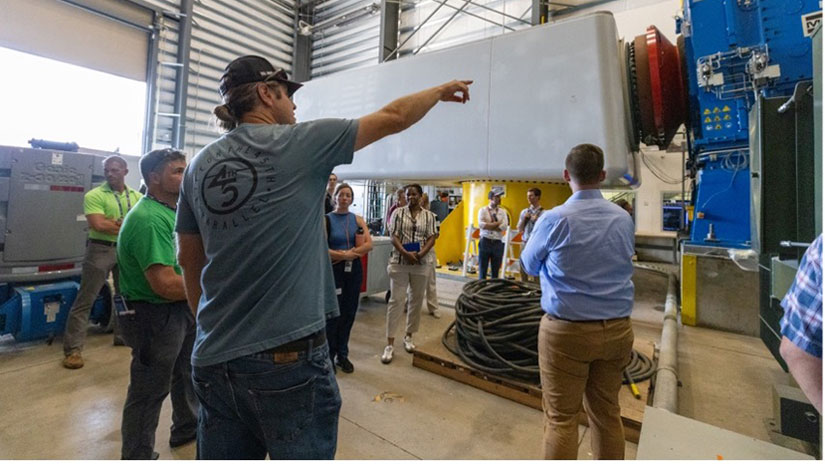
Photo by Gregory Cooper, NREL
NREL had a strong presence at this year’s HYDROVISION International conference, which took place July 15–18, 2024, in Denver. More than 1,200 attendees from 45 states and 36 countries came together to explore key issues in the hydropower industry, network, and learn from each other. NREL researchers led panels and discussions on the hydropower workforce, shared strategies for meeting the industry’s environmental and regulatory challenges, and offered attendees an exclusive look at NREL’s research facilities, including its hydropower emulation capabilities at the Flatirons Campus.
What To Watch
Bringing the Oceans to the Rockies With NREL’s Motion Platform
NREL’s large-amplitude motion platform allows experts to replicate powerful ocean waves in a low-risk laboratory setting. The large-amplitude motion platform, coupled with NREL’s diverse array of testing instrumentation, could help technology developers rapidly hone their prototypes before conducting potentially costly and time-consuming ocean trials. Check out this video to learn about the specifications and see how your technology could benefit.
Hydropower News
New NREL Report Explores the Benefits and Challenges of Floating Photovoltaic Projects
A new technical report from the National Renewable Energy Laboratory explores the benefits and challenges of floating photovoltaic systems, highlighting their potential to conserve land and water resources while improving recreational opportunities. Floating solar systems can be colocated and even integrated with new or existing hydroelectric and pumped storage hydropower facilities, allowing two types of electricity generation to share infrastructure, which reduces costs and improves energy production.
Researchers Develop Five-Step Toolkit To Support Transitions in the Hydropower Workforce
NREL researchers have developed a new resource designed to help hydropower organizations develop a culture of knowledge sharing and reduce knowledge loss during workforce transitions. The Knowledge Sharing and Succession Planning Toolkit on OpenEI outlines a five-step process that can be used by any hydropower organization to smooth the transfer of knowledge between current workers retiring from the field and new workers entering the industry. The toolkit, which was developed with feedback from industry partners, also includes downloadable tools, templates, and checklists to simplify the process. These tools will be critical in the coming decade, when more than a quarter of the hydropower workforce is expected to retire. The toolkit was compiled by NREL and funded by the U.S. Department of Energy’s (DOE’s) Water Power Technologies Office (WPTO).
Facilities Invited To Join New Hydropower Testing Network
WPTO recently launched the Hydropower Testing Network on ENERGYWERX to connect hydropower technology developers with testing capability providers and advance technologies toward commercialization. Phase 1 of the Hydropower Testing Network invites academic institutions and private, national, and federal laboratories to apply to become a test facility (or voucher provider) if they have existing capabilities to test hydropower technologies. Prospective test facilities should submit their application on the ENERGYWERX page by Aug. 8, 2024.
New Website Highlights Cybersecurity Tool for Hydropower
NREL researchers are developing a cybersecurity situational awareness tool designed for hydropower and other distributed energy resource-integrated grid networks. Using state-of-the-art artificial intelligence, the cybersecurity situational awareness tool detects stealthy cyberattacks early, minimizes evolving cybersecurity risks, analyzes grid performance through technical and economic metrics, and aids grid operators in making informed decisions to enhance the resiliency and security of hydropower plants.
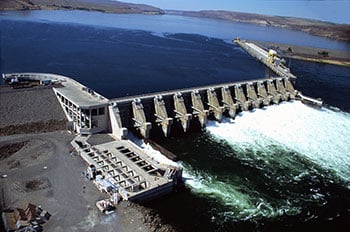
NREL Researchers Expand Capabilities of Pumped Storage Hydropower Planning Tool
The Pumped Storage Hydropower (PSH) Supply Curves Tool now offers even more insight into the quantity, quality, and cost of new PSH resources. This NREL-developed tool allows users to perform in-depth explorations of potential PSH sites and their characteristics. With the new updates, users can now connect a hypothetical reservoir to an existing one, explore the potential for building new reservoirs in open pit mines, and learn about policy incentive opportunities for PSH under the Inflation Reduction Act. Altogether, the tool’s capabilities help provide a more accurate picture of how PSH can contribute to a grid powered by clean energy.
Marine Energy News
Water Research Hub Earns Five More Years of Funding
In April, DOE announced that the National Alliance for Water Innovation (NAWI) has been extended for five more years. Launched in 2019, the National Alliance for Water Innovation is a research hub that brings together a world-class team of partners from industry and academia as well as the hub’s public membership organization, called the NAWI Alliance. The extended funding includes $75 million in funding from two DOE offices: the Industrial Efficiency and Decarbonization Office and the Water Power Technologies Office. Read more about how this extended funding will help make U.S. water supplies more accessible, affordable, and energy efficient.
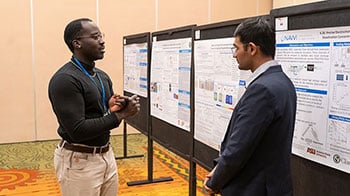
Additive Manufacturing Could Turn the Tides for Marine Energy Technologies—Here Is How
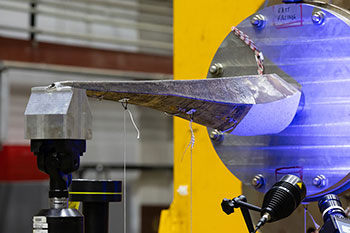
Since February 2022, researchers at NREL and Pacific Northwest National Laboratory have been exploring how additive manufacturing could complement marine energy technologies. More commonly known as 3D printing, additive manufacturing is a process that uses thin layers of material (like polymers, metals, ceramics, or others) to create a physical object from a three-dimensional model. A model is created in a digital file, which transfers to the printer. With support from WPTO to advance foundational research and development for the Powering the Blue Economy™ initiative, the team has been analyzing materials and printing methods for components that make up tidal turbine blades. Through their research, experts have determined that stainless steel (a corrosion-resistant material) and laser metal deposition (an additive manufacturing method) are the most promising options for fabricating tidal turbine spars.
Tidal Energy Is Coming to Alaska. But How Much?
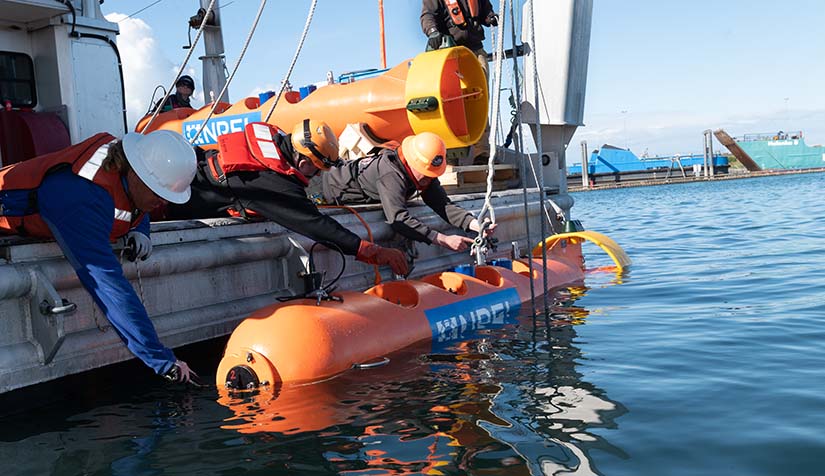
Photo from Christopher Pike
A new NREL study funded by WPTO examines just how much value the new but fast-growing tidal energy industry could bring to the Railbelt grid in Alaska. The state’s Cook Inlet, which flows right up to the center of the Railbelt in Anchorage, contains some of the largest tidal energy resources of any region on Earth (including about one-third of the United States’ total tidal power). But because tidal energy is still relatively new, its potential value is not always fully understood. Learn more about how energy from Cook Inlet could power about 70,000 homes and watch this YouTube video about Cook Inlet energy.
New Tidal Turbine Deployment Will Deepen Our Understanding of Tidal Energy
Graduate students at the University of New Hampshire—with help from researchers at NREL, Sandia National Laboratories, and the Pacific Northwest National Laboratory—are preparing to deploy a tidal turbine that will provide key data for future marine energy research. The turbine, which is outfitted with NREL’s Modular Ocean-source Data Acquisition system (found on DOE's site), will gather information on strain, power output, environmental conditions, and more. The data, which will be shared on the DOE's Marine and Hydrokinetic Data Repository, will be key for future turbine research.
NREL Paper Wins Best Paper Award at the 42nd International Conference on Ocean, Offshore, and Arctic Engineering
A paper coauthored by NREL mechanical engineer Salman Husain received the 2023 Best Ocean, Offshore, and Arctic Engineering Paper Award at the Ocean, Offshore, and Arctic Engineering 2024 conference. The paper, Investigation of Theoretical Solutions to a Bottom-Raised Oscillating Surge Wave Energy Converter Through Experimental and Parametric Studies, outlines the researchers’ experiment with an oscillating surge wave energy converter in a wave tank setting, measuring the accuracy of analytical predictions about the device’s behavior against its actual performance in the waves. Husain and his coauthors were awarded based on the quality of the paper and presentation.
Marine Energy Intern Wins Collegiate Award for NREL Research
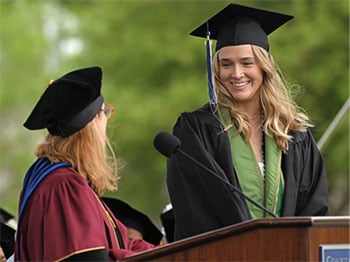
Congratulations to former NREL intern Sarah Hall, who received the Connecticut College Claire Gaudiani ’66 Prize for research performed during her Science Undergraduate Laboratory Internship last summer under the mentorship of marine energy researcher Katie Peterson. Hall’s research, detailed in her Connecticut College honors thesis, used multicriteria decision analysis methodologies to aid site selection for coastal structure integrated wave energy converters. These methods incorporate not only energy resource data but also technical, socioeconomic, and environmental data to facilitate more sustainable, equitable, and just transitions to renewable energy around the world. The results of Hall’s research are projected to be incorporated into NREL’s Marine Energy Atlas in the next year or two.
Prizes and Competitions
Water Power Competitions Give Participants a Head Start in Clean Energy Careers; 2025 Teams Announced
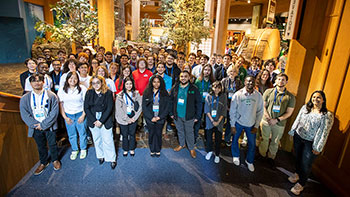
Two student-led teams have claimed first place in DOE’s annual water power collegiate competitions. The defending champions from the University of New Hampshire were named overall winner in the fifth annual Marine Energy Collegiate Competition, and Northern Arizona University took the top spot in the second annual Hydropower Collegiate Competition. Competition organizers also awarded second and third place, along with winners of individual contests within the competitions. The competitions invite undergraduate and graduate students to develop solutions for complex water power challenges while offering them access to real-world experience and professional connections that can give them a head start in clean energy careers.
A total of 36 teams were selected to compete in the next marine energy and hydropower collegiate competitions. While next year’s competitors will participate in many of the same contests as this year, for the first time, next year’s cohort will be paired with industry mentors who can assist with competition deliverables throughout the year.
Innovating Distributed Embedded Energy Prize Phase II Winners Showcase Innovations in Distributed Embedded Energy Solutions
The Innovating Distributed Embedded Energy Prize Phase II, DOE indicates, has awarded $80,000 to each of its 15 winners, highlighting innovative approaches in distributed embedded energy converter technology solutions. This phase served as a platform for participants to develop and test their unique distributed embedded energy converter technology concepts at a benchtop scale. It also represented the final opportunity for new teams to join and collaborate.
The Innovating Distributed Embedded Energy Prize is dedicated to enhancing energy resilience in coastal cities and supporting governmental objectives to achieve net-zero carbon emissions by 2050. The prize focuses on pioneering advancements that merge materials and renewable energy research to harness wave energy for electricity generation, marking the initial steps in exploring distributed embedded energy converter technology’s potential in energy conversion.
Beneath the Surface: How a High School Essay Steered Tina Ortega Toward a Career in Marine Energy

For as long as she could remember, Ortega felt a deep connection to the natural world. Growing up in the Northern California city of Red Bluff, she would often swim in Whiskeytown Lake, hike Mount Lassen and Mount Shasta, take walks along the Sacramento River, and camp in Redwood National Park to recharge and marvel at nature’s vastness and beauty.
Today, as a marine energy research engineer specializing in techno-economics and resource assessment, she works with her mentor, Elena Baca, to study the technical and financial aspects of harnessing energy from ocean waves and currents.
In this Beneath the Surface profile, Ortega shares her connection to and reverence for the natural world and how it inspired her to seek out a career that would help protect the environment.
Events and Opportunities
Upcoming Events
University Marine Energy Research Community + Marine Energy Technology Symposium
Aug. 7–9, 2024, Duluth, Minnesota
The University Marine Energy Research Community will once again team up with the Marine Energy Technology Symposium to host its annual conference, University Marine Energy Research Community + Marine Energy Technology Symposium, this summer in Duluth, Minnesota, at the Duluth Entertainment Convention Center.
Join experts from NREL for a workshop focused on two marine turbine modeling codes: OpenFAST and CT-Opt. OpenFAST models individual fixed and floating turbines, whereas CT-Opt enables control codesign of marine turbines across multiple fidelity levels. The workshop will cover installation, example cases, and setup of new simulations.
Water Power Technologies Office Semiannual Stakeholder Webinar: Artificial Intelligence, Machine Learning, and Water Power
Aug. 22, 2024, Virtual
Join experts from WPTO for a discussion on artificial intelligence and machine learning. Learn about where they see potential benefits and uses of these tools in the hydropower and marine energy sectors and where they may already be in use.
Water Power Technologies Office R&D Deep Dive: Cybersecurity Situational Awareness Tool for Hydropower
Aug. 27, 2024, Virtual
NREL’s Cybersecurity Situational Awareness Tool is an advanced threat finder that provides a trusted alarm system with detailed information about different types of intrusions in grid networks. This presentation focuses on the design and development of the tool while highlighting future efforts toward commercialization.
An Introduction to AquaPV
Sept. 18, 2024, Virtual
Floating PV is a nascent technology in the United States that mainly focuses on manmade water bodies. In this webinar, we discuss the overview and results of the project “AquaPV: Foundational Analysis and Industry Guidance on Floating PV for Reservoirs.” The Idaho National Laboratory and NREL project team will provide an overview of the project and its key results, including:
- A demonstration of the Idaho National Laboratory web application AquaPV
- An introduction to the NREL report on regulatory pathways for siting floating solar at federally regulated reservoirs
- The findings from NREL’s floating solar technical resource potential assessment for federally regulated reservoirs in the United States.
International Conference on Ocean Energy
Sept. 17–19, 2024, Melbourne, Australia
The 2024 International Conference on Ocean Energy will bring together ocean energy leaders, decision makers, and researchers from every corner of the globe for a rich and exciting program of sessions, workshops, networking, technical site visits and an insight into Australasia’s rapidly evolving ocean energy activities.
STEMapalooza at NREL
Nov. 8–9, 2024, Golden, Colorado
The 2-day event is designed to increase interest in STEM fields, engage stakeholders in dialogues and program planning, and inspire the next-gen workforce. Funded by WPTO, STEMapalooza will include:
- Our annual fall kickoff meetings with the 2025 Hydropower Collegiate Competition and Marine Energy Collegiate Competition teams and faculty advisors
- A demonstration of the Renewable Energy Discovery Island web-based app
- A prep event for the National Ocean Sciences Bowl's Trout Bowl with high school students and faculty
- Hands-on activities and presentations with our STEM industry partners for all grade levels.
NREL in the News
International Water Power and Dam Construction and HydroReview reported on the recent Seedlings and Saplings awards.
The Cool Down picked up NREL’s recent story on the partnership between NREL and the University of New Hampshire to hone a tidal energy turbine.
CleanTechnica and Hydro Review both covered NREL's recent report on the potential for ocean energy to support Alaska's clean energy needs.
Offshore Energy and Hydro Review reported on recent program picks for Testing Expertise and Access for Marine Energy Research.
VoxelMatters covered Paul Murdy's recent work on 3D-printed tidal turbines.
Renewable Energy Magazine, upstream, and Hydro Review cited NREL's stats on marine energy potential for articles on Eco Wave Power's feasibility study.
NREL was mentioned as a collaborator in a CleanTechnica article on Loney Buoy's wave energy converter.
CNN interviewed James Niffenegger about his marine carbon dioxide removal study.
CleanTechnica reposted our article on the PSH cost estimation tool: How Mountains Could Store Mountains of Clean Energy.
pv magazine published an article on the PSH cost estimation tool.
Publications
See all the latest publications, or explore these featured publications.
Hydropower
AquaPV: Regulatory and Environmental Considerations for Floating Photovoltaic Projects Located on Federally Controlled Reservoirs in the United States, NREL Technical Report (2024)
Marine Energy
Testing Expertise and Access for Marine Energy Research Technical Support for Aquantis (Materials), Cooperative Research and Development Final Report, NREL Technical Report (2024)
Accelerated Lifetime Testing of Main Shaft Seals for Tidal Turbine Rotors, NREL Technical Report (2024)
Evaluating the Impact of Tidal Energy in the Cook Inlet on Alaska’s Railbelt Electrical Grid, NREL Technical Report (2024)
Evaluation of New Opportunities for Marine Energy to Power the Blue Economy: Green Hydrogen and Marine Carbon Dioxide Removal, NREL Subcontract Report (2024)
Analysis of Power-Maximizing Region-2 Controllers for Wind and Marine Turbines, Journal of Physics: Conference Series (2024)
Theoretical Modeling of a Bottom-Raised Oscillating Surge Wave Energy Converter Structural Loading and Power Performance, Applied Ocean Research (2024)
Want More?
Subscribe to The Current to get the next water power newsletter in your inbox.
Subscribe to The SPLASH to get the next STEM newsletter in your inbox.
For the latest from the DOE Water Power Technologies Office, sign up for its water power newsletters. Have a more general question or can’t find what you’re looking for? Send us an email at [email protected].
Share
Last Updated Nov. 14, 2025
